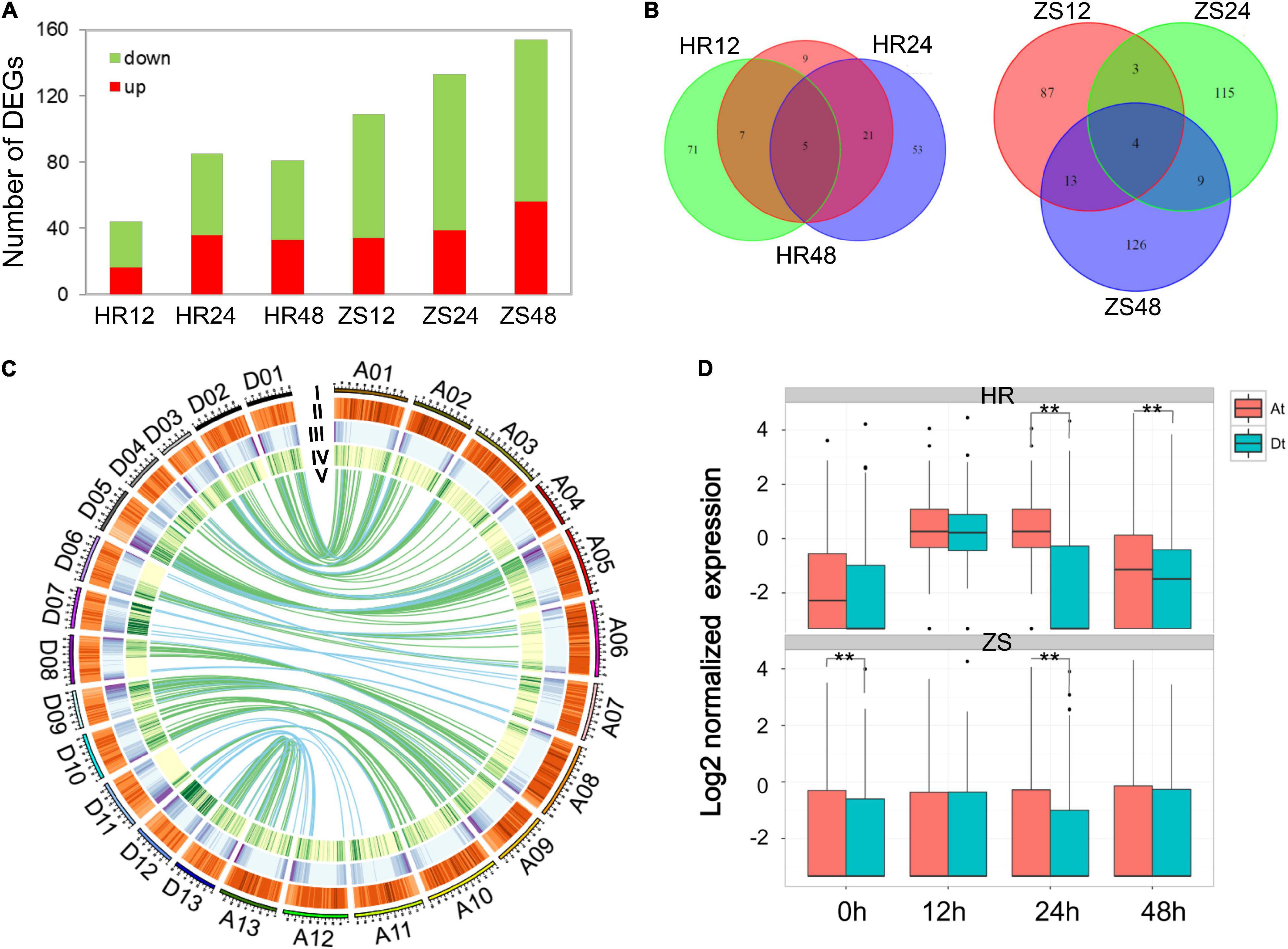Abstract
Sap-sucking insects cause severe damage to cotton production. Long non-coding RNAs (lncRNAs) play vital regulatory roles in various development processes and stress response, however, the function of lncRNAs during sap-sucking insect infection in cotton is largely unknown. In this study, the transcriptome profiles between resistant (HR) and susceptible (ZS) cotton cultivars under whitefly infestation at different time points (0, 4, 12, 24, and 48 h) were compared. A total of 6,651 lncRNAs transcript and 606 differentially expressed lncRNAs were identified from the RNA-seq data. A co-expression network indicated that lncA07 and lncD09 were potential hub genes that play a regulatory role in cotton defense against aphid infestation. Furthermore, CRISPR/Cas9 knock-out mutant of lncD09 and lncA07 showed a decrease of jasmonic acid (JA) content, which potentially lead to increased susceptibility toward insect infestation. Differentially expressed genes between wild type and lncRNA knock-out plants are enriched in modulating development and resistance to stimulus. Additionally, some candidate genes such asGhir_A01G022270, Ghir_D04G014430, and Ghir_A01G022270 are involved in the regulation of the JA-mediated signaling pathway. This result provides a novel insight of the lncRNA role in the cotton defense system against pests.

Full text: https://www.frontiersin.org/article/10.3389/fpls.2022.784511